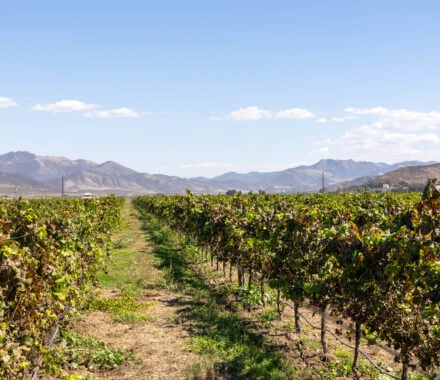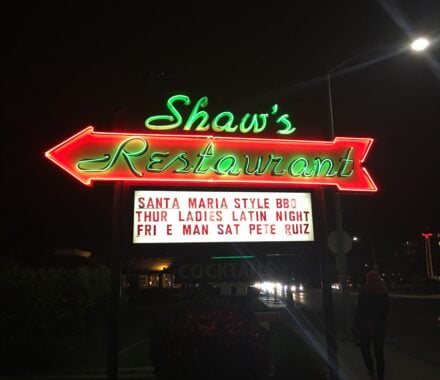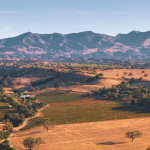One of the distinguishing aspects of Santa Maria Style Barbecue is that it’s not just about the meat, but rather an entire menu steeped in local traditions.
And as with any longtime traditions dating back to the 19th century, you can always expect a bit of mystery as to how they came about!
Which is exactly what you get with locally grown pinquito beans—an essential part of the Santa Maria BBQ Menu, along with fresh salsa, grilled French bread dipped in sweet melted butter, and tossed green salad (and, of course, top block sirloin or tri-tip cooked over red oak).
Indeed, the exact origins of the pinquito bean remain elusive to this day.
In his authoritative book on Santa Maria Style Barbecue, R.H. Tesene wrote about local community barbecues in the 1920s, and noted that “The only beans used were the pinquito, a miniature cousin of the pink bean that has a very distinctive flavor and is only grown in the Santa Maria Valley.”
Local pinquito purveyor Susan Righetti of Susie Q’s Brand recalls that sometime in the 1930s, her maternal grandfather was given a bag of pinquito beans from a grower in nearby Los Osos, and was able to secure a 100-pound bag after putting out some feelers.
Meanwhile, local pinquito farmer John Porter says that his grandfather starting growing the beans in the 1950s from stock imported from Mexico by a friend, which was used to grow beans for Jocko’s Steak House.
So exactly where do these unique small pink beans come from, and how did they become exclusive to the Santa Maria Valley? It’s clearly an unsolved mystery, which is perhaps just as it should be.
What’s not a mystery is why these beans are still treasured as part of the Santa Maria BBQ menu. They are easy to cook, delicious in flavor and maintain a firm, plump texture even when fully cooked.
Get the recipe for Santa Maria Pinquito Beans. Put some on the stove and savor the secret of the Santa Maria Valley pinquito bean.



